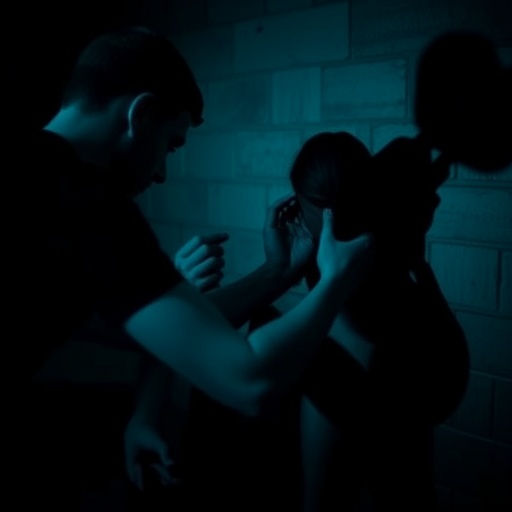In recent years, the quest to understand the multifaceted pathways to sexual revictimization among adolescent girls has gained significant traction in psychological and sociological research. A groundbreaking study led by Pognon, Théorêt, Daigneault, and their colleagues delves into the intricacies of how PTSD and substance use interact to contribute to this alarming phenomenon. Their research offers vital insights into the underpinnings of mental health challenges and their potential societal implications, marking an essential contribution to the discourse on trauma and recovery for young women.
Sexual revictimization refers to the repeated experiences of sexual violence, which unfortunately, becomes a recurring theme for many adolescent girls who have previously encountered such trauma. This study posits that both post-traumatic stress disorder and substance use significantly influence the likelihood of experiencing further sexual victimization. By framing revictimization within this psychological and behavioral context, the research highlights the pressing need for intervention strategies that address these interrelated factors.
Post-traumatic stress disorder (PTSD) arises in individuals as a response to traumatic events, manifesting through a range of symptoms including flashbacks, severe anxiety, and uncontrollable thoughts about the event. Adolescents, whose coping mechanisms are still developing, may find it particularly challenging to deal with the aftereffects of sexual trauma. This inability to process trauma can leave them vulnerable, as their mental health deteriorates, creating an environment ripe for further exploitation and victimization.
The study’s authors meticulously outline how PTSD can exacerbate feelings of worthlessness and isolation among adolescent girls. This emotional turmoil can predispose them to substance use as a misguided coping mechanism. In many cases, young people may turn to drugs or alcohol to numb their emotional pain or to escape their reality. However, this dependence can lead to risky behaviors that elevate the likelihood of subsequent revictimization.
Substance use serves as a double-edged sword; while it may offer temporary relief from psychological distress, it enhances the potential for dangerous situations. When under the influence, impaired decision-making skills can lead to scenarios where a young girl might find herself in threatening environments, thus increasing her vulnerability to predatory behaviors. This cyclical nature of trauma and substance use creates a thoroughfare for victimization that is difficult to escape.
To comprehend the significant correlations drawn from the findings, it is essential to consider the sample population involved in the study. By surveying adolescent girls from diverse backgrounds, the researchers sought to obtain a comprehensive understanding of the factors surrounding sexual revictimization. This diversification enriches the study, providing a nuanced view of how different socio-economic and cultural backgrounds might influence risk factors associated with PTSD and substance use.
Studies have long demonstrated a potential link between mental health disorders and increased risks of victimization. By establishing direct pathways of influence, this research challenges the notion of revictimization as merely coincidental and lays bare the systemic issues that require targeted intervention. It also emphasizes the necessity for trauma-informed care practices among healthcare providers, educators, and community support systems.
Moreover, the implications of this research extend beyond academic interest; they touch upon the urgent need for policymakers to enact protective measures for vulnerable populations. Understanding that PTSD and substance use can serve as precursors to sexual revictimization can guide the development of educational programs that focus not only on prevention but also on providing safe outlets for emotional healing.
In conjunction with policy reform, community awareness initiatives play a crucial role in empowering young women. By equipping them with information about safe practices and resources available for those who might be struggling with trauma, communities can foster environments that prioritize healing rather than stigmatization. This proactive approach can help break the cycle of trauma and revictimization that many adolescent girls face.
Importantly, the research urges a reevaluation of societal attitudes toward young women affected by trauma. Rather than stigmatizing those who turn to substance use as a means of coping, there needs to be a concerted effort to understand the underlying issues at play. Shifting public perceptions can aid in normalizing discussions around mental health and encourage those affected to seek help without fear of judgment.
In summary, the study spearheaded by Pognon and his team sheds light on the intricate relationship between PTSD and substance use as significant contributors to sexual revictimization among adolescent girls. Their findings stress the importance of holistic approaches that encompass mental health support, community involvement, and legislative action, ultimately empowering young women to break free from the chains of trauma and find paths to recovery.
This research, while focusing on a specific demographic, offers valuable insights relevant to broader discussions on trauma, recovery, and societal responsibility. It is a clarion call to acknowledge and address the complex pathways leading to revictimization, fostering a culture of support and understanding for young women navigating the challenges posed by trauma.
As we move forward, it is imperative that we heed the warnings highlighted in this study and work collectively to create a society that not only acknowledges the prevalence of sexual violence but actively participates in the prevention of revictimization through informed care and community support networks.
Subject of Research: The interrelationship between PTSD, substance use, and sexual revictimization among adolescent girls.
Article Title: PTSD and Substance Use as Pathways of Adolescent Girls Sexual Revictimization: A Prospective Study.
Article References:
Pognon, Q., Théorêt, V., Daigneault, I. et al. PTSD and Substance Use as Pathways of Adolescent Girls Sexual Revictimization: A Prospective Study.
Journ Child Adol Trauma (2025). https://doi.org/10.1007/s40653-025-00737-7
Image Credits: AI Generated
DOI: 10.1007/s40653-025-00737-7
Keywords: PTSD, substance use, sexual revictimization, adolescent girls, trauma, mental health.




